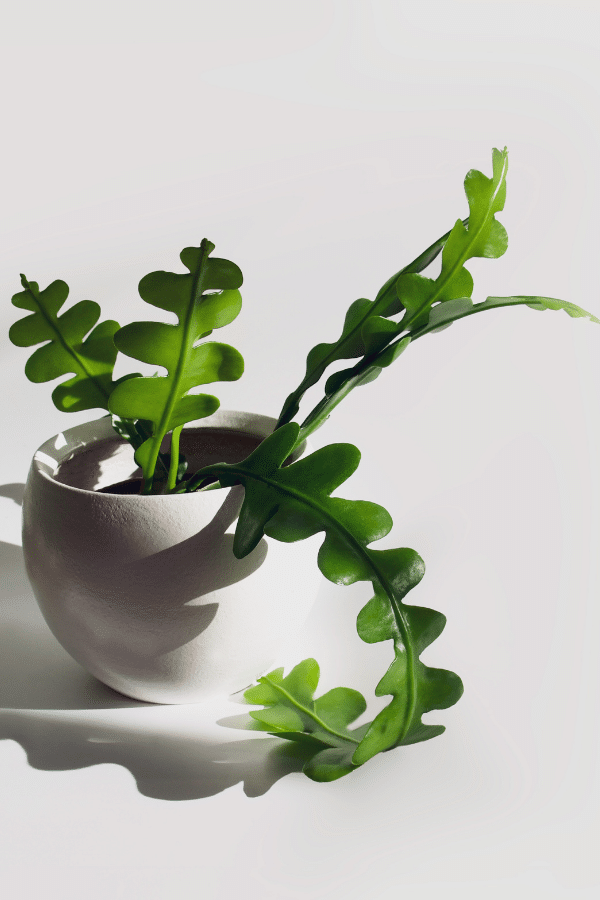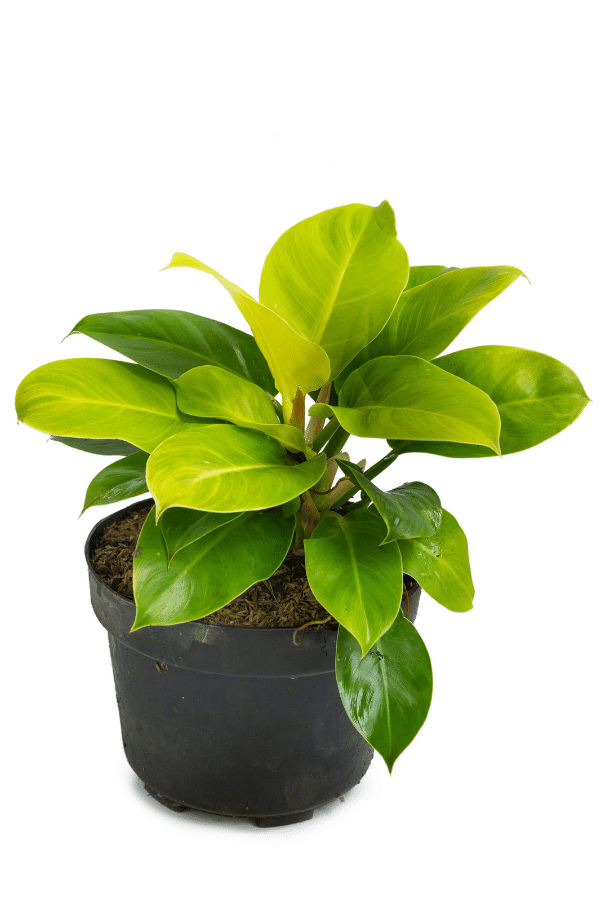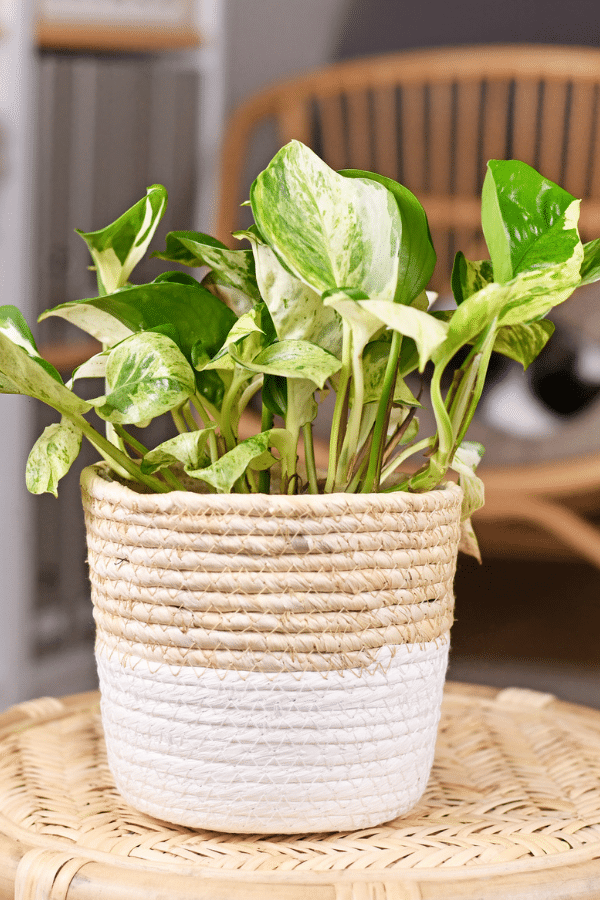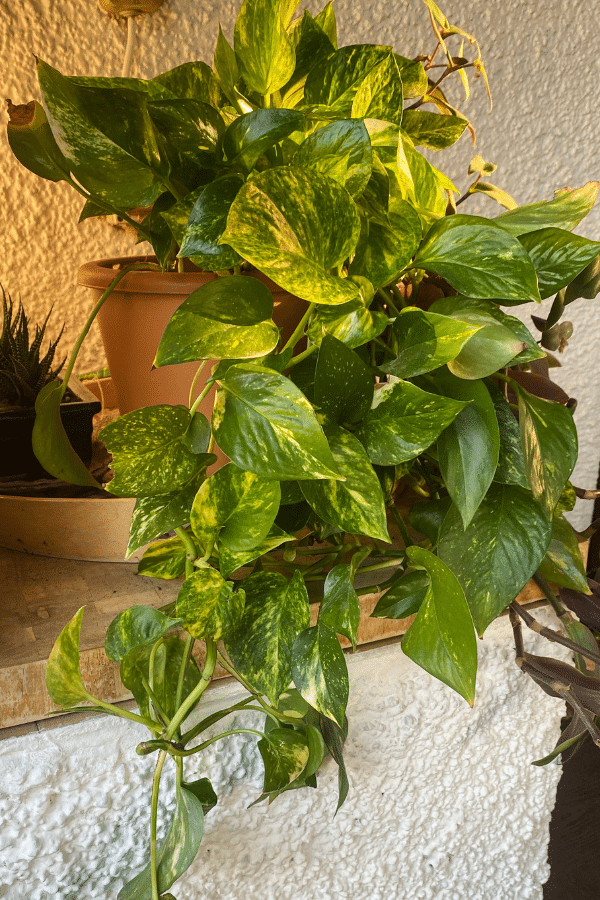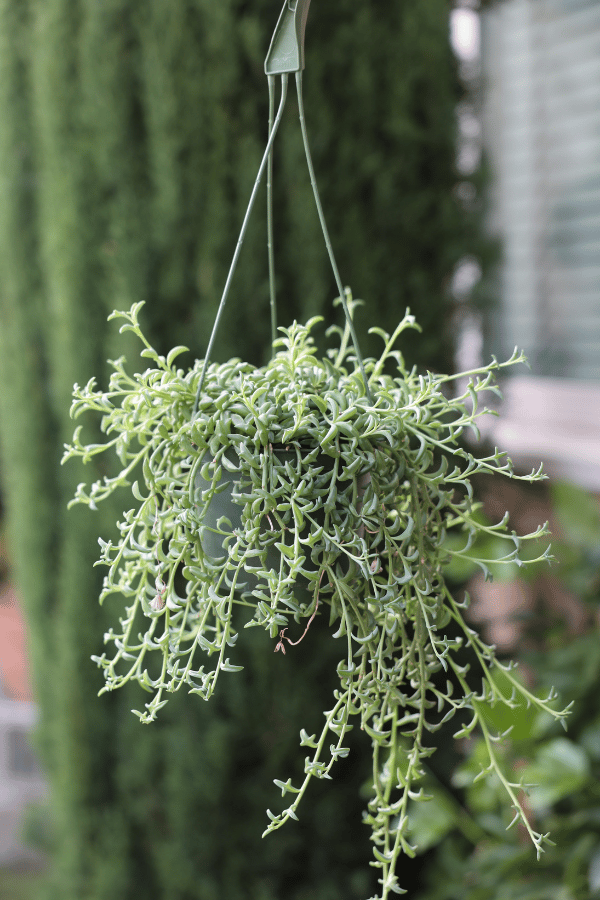Why Are Pothos Leaves Curling?
Pothos plants are a beautiful and popular choice for a houseplant. They are hardy, easy to care for, and grow. However, if you’ve noticed that the leaves of your pothos plant are curling, it could be a sign of an underlying issue.
In this blog post, we’ll explore the common causes of pothos leaves curling and provide you with tips on how to fix them. Sometimes pothos curl their leaves just when they are thirsty and other times, it’s a deeper issue. Whether you’re a seasoned plant parent or a newbie, this guide will help ensure your pothos plant stays healthy and thriving.
Common Causes Your Pothos Leaves are Curling
Pothos plants are generally hardy and require little maintenance. Still, their leaves can sometimes curl, which can signify something isn’t quite right. In this section, we’ll explore some of the most common causes of pothos leaves curling and how you can fix them.
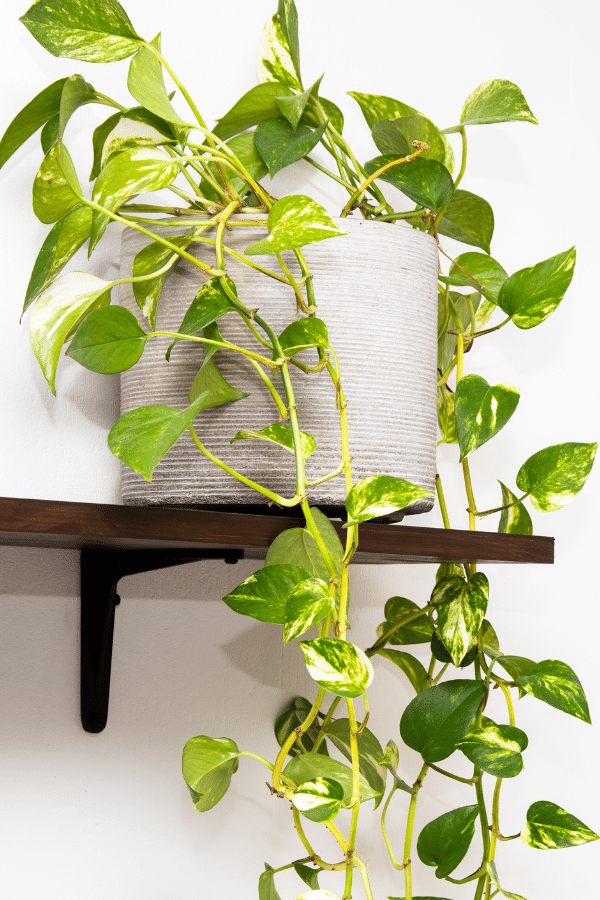
Low Humidity
One of the most common causes of pothos leaves curling is low humidity. Pothos plants are native to tropical regions and thrive in high humidity environments. When the air in your home is too dry, your pothos plant may start to curl its leaves as a way to conserve moisture. Golden pothos is one of the hardier plants and can tolerate low humidity levels.
How to Fix Low Humidity
To fix this issue, you can increase the humidity around your pothos plant by placing a humidifier near the plant or a pebble tray filled with water. You can also try grouping your plants together on a shelf or tabletop to create a mini greenhouse effect. Keeping your pothos plant in a well-lit bathroom can also help as the plant will benefit from the steam from your showers.
Not Enough Water / Your Plant is Thirsty
Another common reason for pothos leaves to curl is that the plant is not getting enough water or is simply thirsty. Pothos plants prefer to be kept moist but not overly wet, and underwatering can cause leaves to curl as a way to conserve water. One of my silver satin pothos started to curl their leaves and I watered it and everything went back to normal!
How to Fix a Thirsty Plant
Ensure you water your pothos plant thoroughly and regularly. Check the soil moisture level by sticking your finger into the soil up to your second knuckle – if the soil feels dry at this depth, it’s time to water your plant. You can also use a moisture meter to check and see when it’s time to water. It’s also important not to let your pothos plant sit in standing water, as this can cause root rot. Always water the plant completely until water pours out of the drainage holes.
Too Much Fertilizer
Over-fertilizing your pothos plant can also cause the leaves to curl. Pothos plants don’t require a lot of fertilizer, and too much can cause nutrient burn, which can damage the roots and cause the leaves to curl.
How to Fix Too Much Fertilizer
If you suspect that over-fertilizing is causing your pothos leaves to curl, you should flush the soil by thoroughly watering your plant until water runs out of the drainage holes. This will help to remove any excess fertilizer from the soil. Going forward, make sure to follow the instructions on your fertilizer package – less is more!
Transplant Shock
If you’ve recently transplanted your pothos plant, it’s possible that it’s experiencing transplant shock, which can cause the leaves to curl. Transplant shock occurs when a plant is moved from one pot to another, and it can take a few days or weeks for the plant to adjust to its new environment.
Transplant shock occurs when a plant is moved from one growing environment to another, and it can cause a variety of symptoms, including leaf curling. When a pothos plant is transplanted, it may experience stress due to changes in temperature, light, humidity, and soil conditions. The shock of being moved can also cause damage to the plant’s root system, which can further exacerbate the problem.
Leaf curling is a common symptom of transplant shock, and it is usually a result of the plant’s struggle to adjust to its new environment, aka a new pot. When a pothos plant experiences transplant shock, it may have difficulty absorbing water and nutrients from the soil, which can cause its leaves to curl as a way of conserving water. The plant may also experience wilting, discoloration, or other signs of stress. Be sure to always pot your pothos with fresh, well-draining soil and a porous pot.
How to Fix Transplant Shock
If your pothos plant is experiencing transplant shock, there’s not much you can do except to give it time to adjust. But what you can do is give it a stable environment. Ensure your plant receives enough water, light, temperature, and humidity levels. Avoid fertilizing until it has fully recovered. With time and proper care, your pothos plant should recover from transplant shock and resume normal growth patterns, including healthy, uncurled leaves.
Pest Infestation
Pothos plants are generally resistant to pests, but they can still fall victim to infestations from common plant pests like spider mites, mealybugs, and scale insects. These pests can cause the leaves of your pothos plant to curl, as well as discoloration, spots, and other signs of damage.
How to Fix Pest Infestation
If you suspect that your pothos plant is infested with pests, it’s important to act quickly to prevent the infestation from spreading. You can start by inspecting your plant closely and using a magnifying glass if necessary to look for signs of pests like webs, eggs, or insects themselves. Once you’ve identified the pest, you can treat the infestation using a pesticide or insecticidal soap. Make sure to follow the instructions on the product carefully and apply it to your plant thoroughly. You may need to repeat the treatment multiple times to fully eradicate the pest. Isolate your pothos plant from your other plants until the infestation is under control to prevent the pests from spreading.
Pothos Needs Repotting
Pothos leaves can curl because of needing to be repotted. When a pothos plant becomes root-bound, meaning that its roots have filled up the entire pot, it can start to experience a variety of problems, including curling leaves.
When a pothos plant needs repotting and becomes root-bound, the roots have taken up all the space in the pot, and there is not enough room for them to grow. This can lead to a lack of nutrients, water, and oxygen for the plant, which can cause stress and damage to the roots. As a result, the plant may start to show signs of distress and curl their leaves to protect their moisture and oxygen.
Curling leaves can also be a sign that the plant is struggling to absorb enough water and nutrients from the soil, as the roots are no longer able to do their job properly due to the limited space. Additionally, a root-bound pothos may also struggle to regulate its moisture levels, which can lead to both overwatering and underwatering.
Repotting your pothos plant can give it a fresh start by providing it with more space for its roots to grow and access the nutrients and water it needs to thrive. It can also help improve the plant’s overall health and appearance, as it can prevent further damage to the roots and allow the plant to resume normal growth patterns.
How to Fix
If you suspect that your pothos plant needs to be repotted, you can check by gently removing it from its current pot and inspecting the roots. If the roots are circling around the edges of the pot or growing out of the drainage holes, it’s time to repot your plant. To repot:
- Choose a container one size larger than the current pot, and fill it with fresh, well-draining soil.
- Gently remove your pothos plant from its current pot, and carefully untangle the roots.
- Place the plant in the new pot and fill in any gaps with soil.
- Tap down to allow the soil to sink in where it needs to go.
- Water your plant thoroughly and place it in a location with bright, indirect light to help it adjust to its new home.
Pothos is Getting Sunburned
Pothos plants are typically grown as indoor plants, and they thrive in bright but indirect light. However, if a pothos plant is placed in direct sunlight, it can quickly become sunburned, which can cause the leaves to curl and turn brown. This is because direct sunlight can be too intense for pothos plants, and it can cause the leaves to lose water rapidly, leading to dehydration and damage.
When pothos get too much sunlight, they get stressed out from the heat so the plant curls their leaves in to hold onto as much moisture as possible. It’s important to place your pothos in a location where it can receive bright but indirect light to avoid your pothos plant from getting sunburned. You can also move the plant away from direct sunlight daily during the hottest part of the day to reduce the risk of sunburn.

How to Fix
Any damage to the leaves from sunburn are permanent. If your pothos plant has already been sunburned, trim away any damaged leaves. Be sure the plant is not overwatered, as overwatering can exacerbate the damage caused by sunburn. Additionally, you can apply a gentle fertilizer to help the plant recover and encourage new growth. With proper care and attention, your pothos plant should be able to recover from sunburn and resume healthy growth, with leaves that are no longer curled or damaged.
Other Causes
If you’ve ruled out low humidity, lack of water, too much fertilizer, pest infestation, transplant shock, and sunburn as causes for your pothos plant’s leaves curling, there may be other underlying issues at play. Here are a few additional things to consider if you’re still struggling with curled pothos leaves:
- Check the temperature: Pothos plants prefer temperatures between 65-75°F (18-24°C), and they can become stressed if the temperature drops below or rises above this range. Make sure your pothos plant is not in a drafty location, and keep it away from any heating or cooling vents.
- Consider the soil: Pothos plants prefer well-draining soil that is slightly moist but not waterlogged. If the soil is too heavy or compacted, it may not be allowing proper drainage or airflow to the plant’s roots. Consider repotting your pothos in fresh, well-draining soil.
- Adjust your watering routine: While pothos plants don’t like to be overwatered, they also don’t like to be completely dry. If you’ve been watering your pothos on a strict schedule, try adjusting your routine to water only when the top inch of soil feels dry to the touch.
- Give it a rest: If you’ve tried all of the above and your pothos plant is still struggling, it may simply need a break. Consider giving it a few weeks of minimal care, with only occasional watering and no fertilizing. Sometimes, less is more when it comes to caring for houseplants.
By taking the time to troubleshoot the issue and making any necessary adjustments to your care routine, you can help your pothos plant recover from curled leaves and thrive once again.


